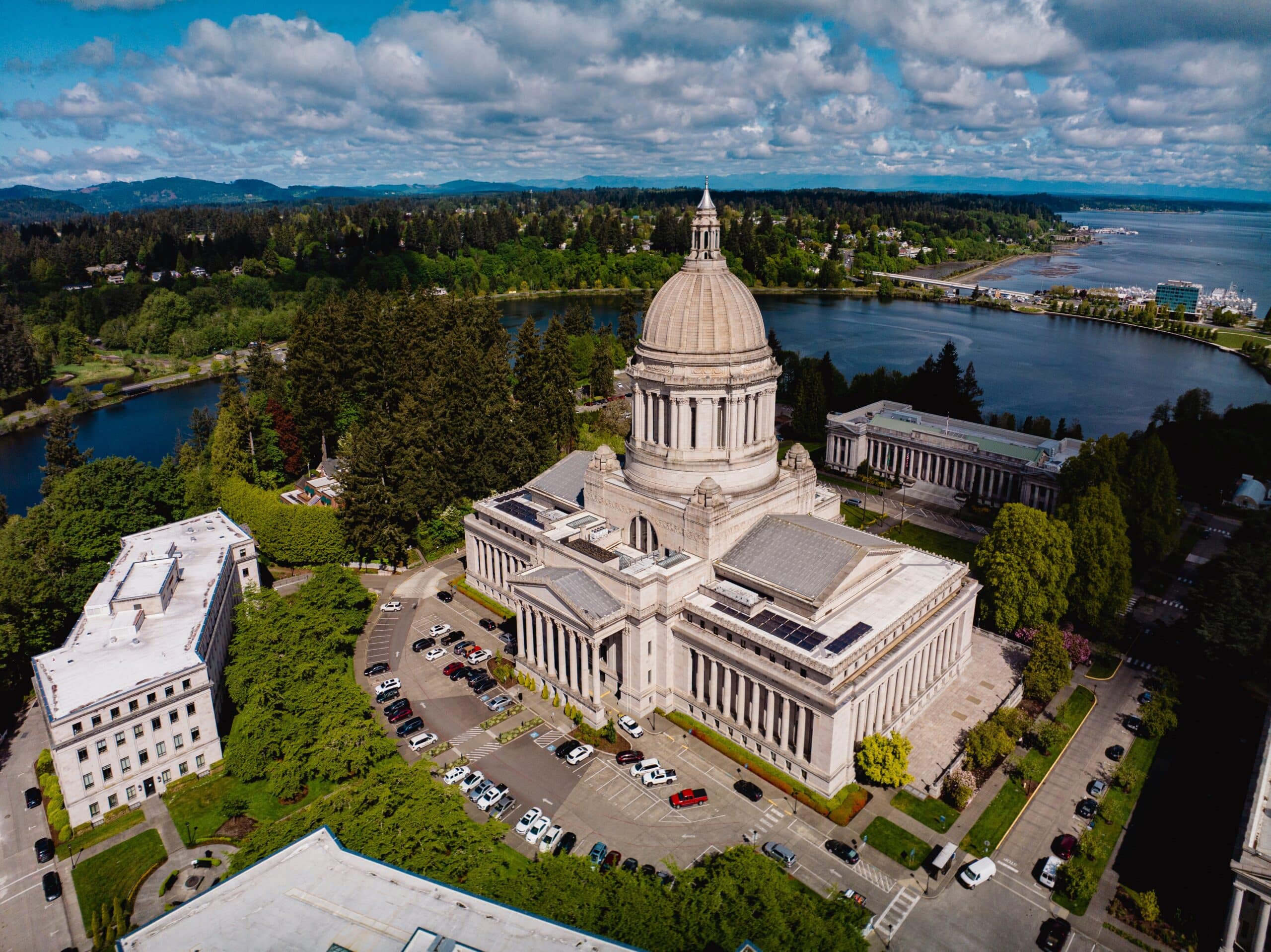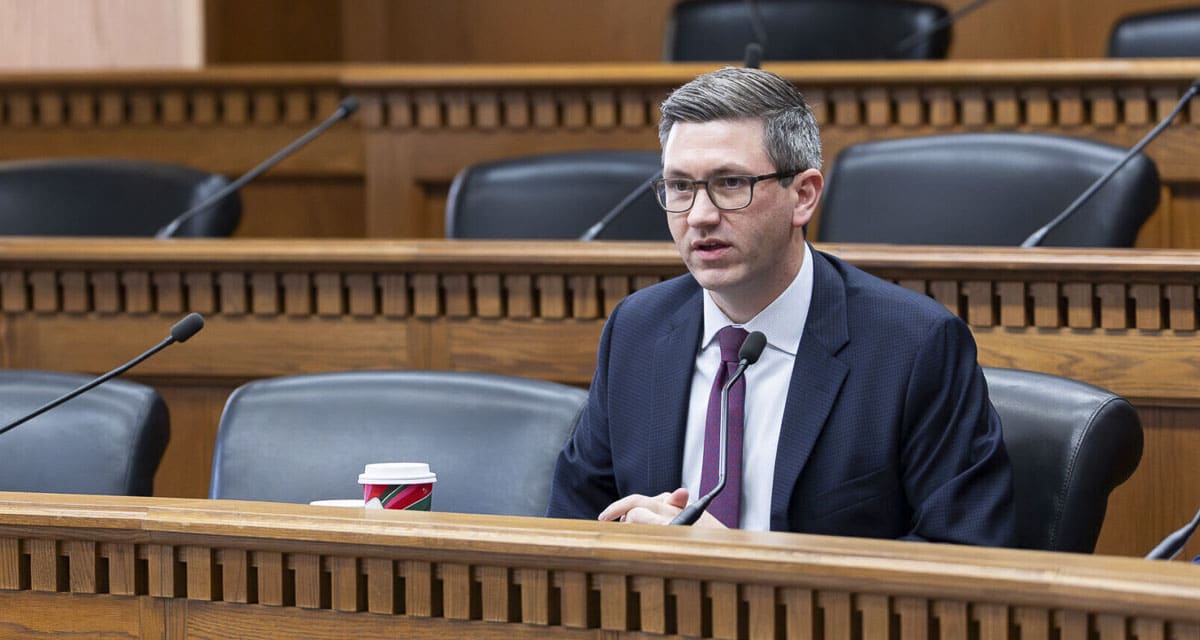Scientists point to controlled burns, or prescribed fires, as “an important tool for keeping forests healthier and less susceptible to devastating wildfires.” Given the historic wildfires that have recently raged in Eastern Washington, Forest Service officials want to step up the scale of these burns in our state.
In fact, they have been asking state officials like Peter Goldmark for the ability to take these preventative measures for years.
Unfortunately, their plans have been blocked by the state Department of Natural Resources (DNR), the agency responsible for much of the wildland firefighting in Washington. The Seattle Times,
“DNR enforces a strict set of rules aimed at keeping smoke from drifting into communities — effectively limiting the scope of controlled burns sought by the Forest Service and others. Meanwhile, DNR has stopped conducting burns on its own forest lands…”
Responsibility lies with state Public Lands Commissioner Peter Goldmark
Who is responsible for the setting DNR’s policy for an astonishing lack of controlled burns to prevent bigger widlfires? Peter Goldmark, a Democrat first elected as state Public Lands Commissioner in 2008. Under Goldmark’s “leadership”, controlled burns in Washington State have lagged far behind neighboring states, including Oregon and Idaho.
Goldmark blames blowback his agency receives when smoke drifts into towns as the reason for his lack of protecting state lands from wildfires. “Of course we want to be helpful in terms of prescribed burns, but we have the responsibility that communities don’t get smoked out, and that’s not an easy task,” Goldmark told the Seattle Times.
Rather than rely on controlled burns, Goldmark prefers “chain saws and other equipment as the first tools of choice for thinning the woodlands.” The problem is that approach is far less effective and far more expensive. The Seattle Times,
“Forest Service officials say some heavily wooded areas do require thinning before a controlled burn. But they say other areas can be treated with fire alone — a less expensive option.”
Controlled burns proven to be effective
A perfect example of the benefits of controlled burns occurred in August when a wildfire advanced on homes in the Aeneas Valley. Forest Service firefighters had deliberatively burned the area during cooler spring and fall seasons to clear out undergrowth. As a result, firefighters were able to halt the “northern advance of the North Star wildfire, one of the largest blazes of the summer that consumed hundreds of square miles across the state.”
The science behind controlled burns is strong. Scientists have concluded that the strategy is effective in both preventing and controlling forest fires. The Seattle Times,
“Scientists found that natural fires in lower- and mid- elevation Ponderosa pine and Douglas fir forests historically occurred at frequent intervals, and the thick-barked trees typically survived these fires. But decades of fire-suppression allowed a buildup of young trees and other brush that contributes to more destructive wildfires.
“So in the 1990s, the Forest Service began conducting controlled burns to reduce this fuel.
“Forest scientists have concluded that these prescribed fires can make forests less prone to disease, and benefit wildlife. And when wildfires erupt, the stands treated with fire are likely to burn with less intensity, offering a place for crews to set defensive lines.”
Goldmark makes the wrong choice
In 2009, DNR dealt with public backlash from smoke that blew from the Naches Ranger District into the Yakima Valley from a controlled burn. Goldmark overreacted and imposed restrictions that “effectively halted all controlled burns in the Naches District for more than a year.”
The restrictions were removed in 2011 after a DNR official acknowledged the agency went too far. However, rules were left that required burns to be “be smaller and conducted over only one day.”
One year later, firefighters battled the 2012 Wild Rose Fire in the region. And, the controversial controlled burns that took place years earlier proved vital to firefighters’ efforts to halting its progress.
Goldmark does not appear to understand that he is dealing with a tradeoff when it comes to controlled burns, and he’s making the wrong choice. The Seattle Times,
“It’s a tradeoff the public needs to come to grips with, said Michael Medler, chair of the environmental studies at Western Washington University, who studies wildfires.
“‘You don’t stop these fires. You just put them off,’ said Medler, a former wildland firefighter. ‘Would you like us to pick a day and dump X amount of smoke? Or would you like to gamble and say in two or three years you’ll get something that brings two or three times as much?’”




